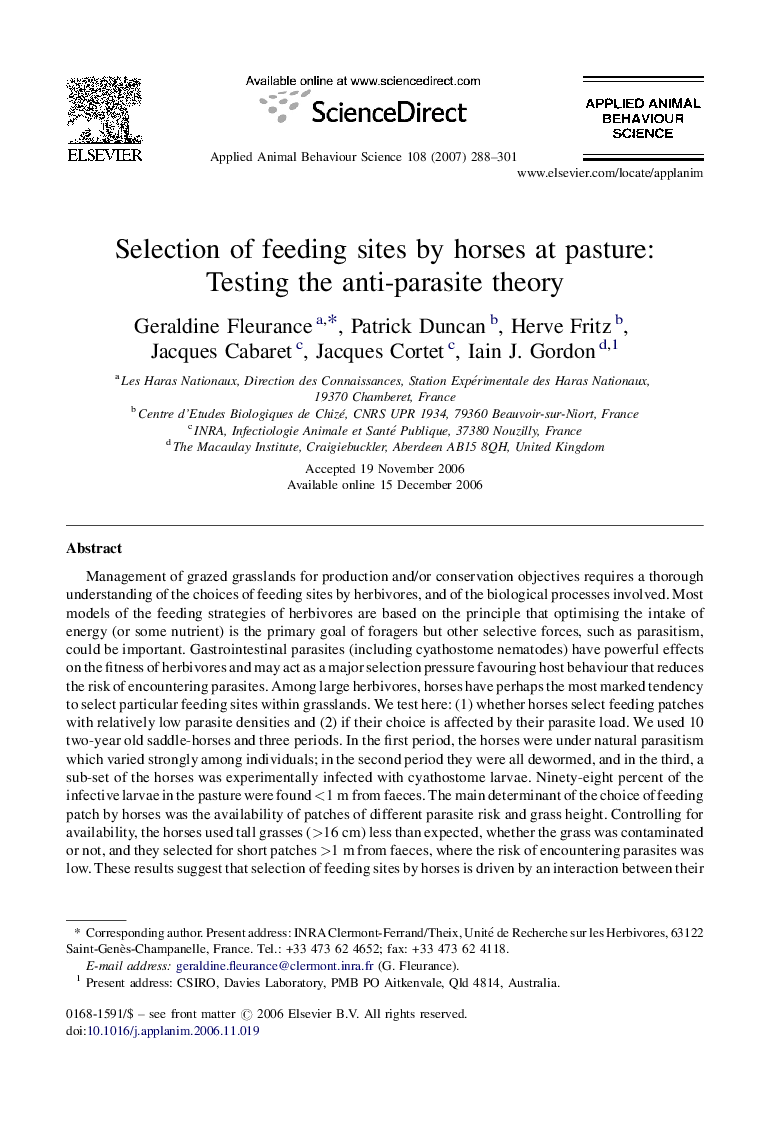| کد مقاله | کد نشریه | سال انتشار | مقاله انگلیسی | نسخه تمام متن |
|---|---|---|---|---|
| 4524144 | 1625427 | 2007 | 14 صفحه PDF | دانلود رایگان |

Management of grazed grasslands for production and/or conservation objectives requires a thorough understanding of the choices of feeding sites by herbivores, and of the biological processes involved. Most models of the feeding strategies of herbivores are based on the principle that optimising the intake of energy (or some nutrient) is the primary goal of foragers but other selective forces, such as parasitism, could be important. Gastrointestinal parasites (including cyathostome nematodes) have powerful effects on the fitness of herbivores and may act as a major selection pressure favouring host behaviour that reduces the risk of encountering parasites. Among large herbivores, horses have perhaps the most marked tendency to select particular feeding sites within grasslands. We test here: (1) whether horses select feeding patches with relatively low parasite densities and (2) if their choice is affected by their parasite load. We used 10 two-year old saddle-horses and three periods. In the first period, the horses were under natural parasitism which varied strongly among individuals; in the second period they were all dewormed, and in the third, a sub-set of the horses was experimentally infected with cyathostome larvae. Ninety-eight percent of the infective larvae in the pasture were found <1 m from faeces. The main determinant of the choice of feeding patch by horses was the availability of patches of different parasite risk and grass height. Controlling for availability, the horses used tall grasses (>16 cm) less than expected, whether the grass was contaminated or not, and they selected for short patches >1 m from faeces, where the risk of encountering parasites was low. These results suggest that selection of feeding sites by horses is driven by an interaction between their nutritional and anti-parasite strategies: the horses avoid the patches of tall grass which are generally of low quality and areas contaminated by parasite larvae which leads them to prefer the patches of short grass far from faeces. The parasite status of the horses at the time of the experiment had no effect on their feeding choices. However, before concluding that the challenge by cyathostomes has no effect on the selection of feeding sites in horses, it will be necessary to test whether the history of parasitism of the individuals, rather than the current status, is important.
Journal: Applied Animal Behaviour Science - Volume 108, Issues 3–4, 25 December 2007, Pages 288–301